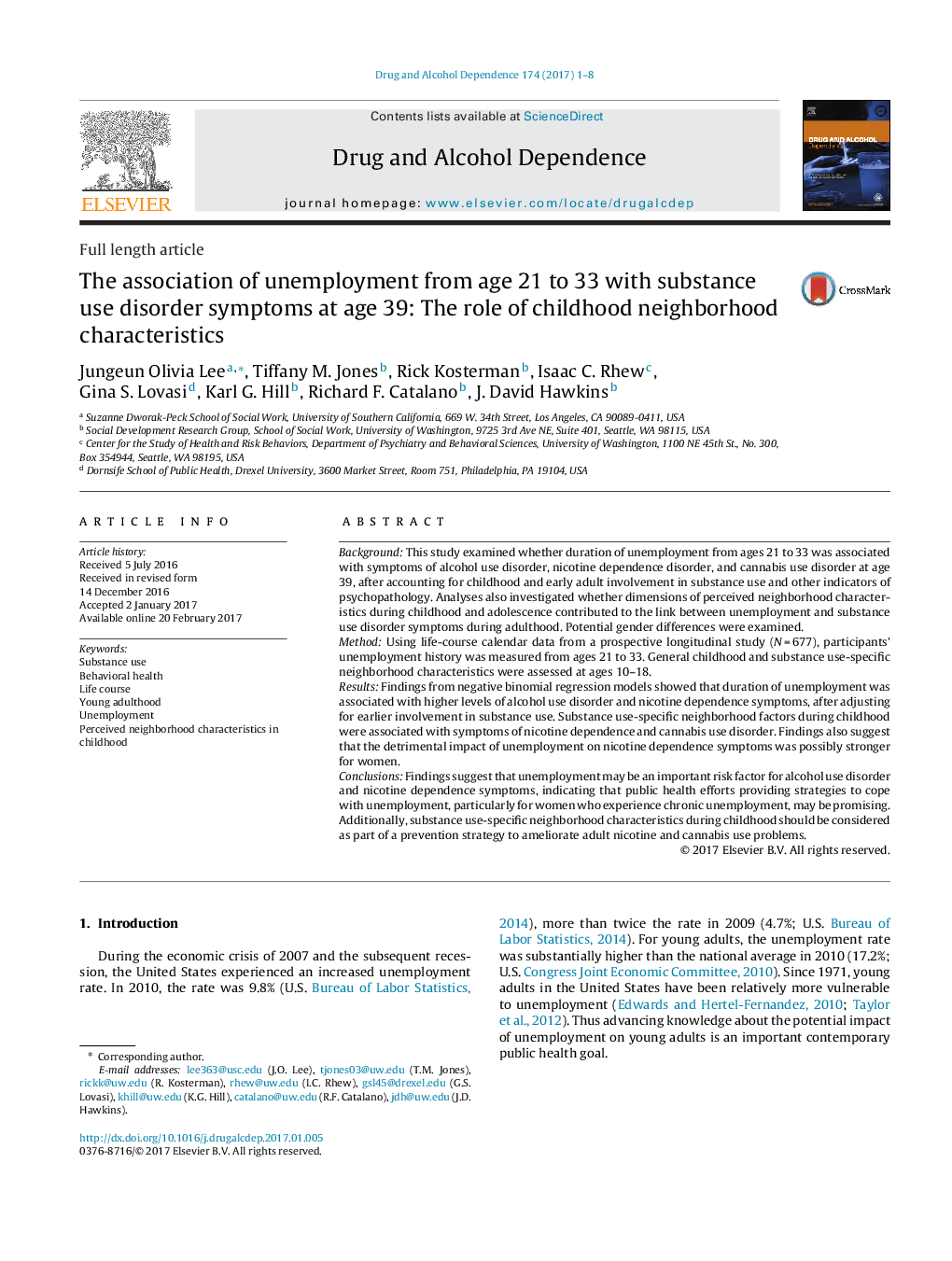| Article ID | Journal | Published Year | Pages | File Type |
|---|---|---|---|---|
| 5120117 | Drug and Alcohol Dependence | 2017 | 8 Pages |
â¢Duration of unemployment was associated with alcohol use disorder symptoms.â¢Duration of unemployment increases nicotine dependence disorder symptoms.â¢Child neighborhood factors were predictive of nicotine dependence symptoms.â¢Child neighborhood factors predicted cannabis use disorder symptoms.â¢The impact of unemployment on nicotine dependence might be stronger for women.
BackgroundThis study examined whether duration of unemployment from ages 21 to 33 was associated with symptoms of alcohol use disorder, nicotine dependence disorder, and cannabis use disorder at age 39, after accounting for childhood and early adult involvement in substance use and other indicators of psychopathology. Analyses also investigated whether dimensions of perceived neighborhood characteristics during childhood and adolescence contributed to the link between unemployment and substance use disorder symptoms during adulthood. Potential gender differences were examined.MethodUsing life-course calendar data from a prospective longitudinal study (NÂ =Â 677), participants' unemployment history was measured from ages 21 to 33. General childhood and substance use-specific neighborhood characteristics were assessed at ages 10-18.ResultsFindings from negative binomial regression models showed that duration of unemployment was associated with higher levels of alcohol use disorder and nicotine dependence symptoms, after adjusting for earlier involvement in substance use. Substance use-specific neighborhood factors during childhood were associated with symptoms of nicotine dependence and cannabis use disorder. Findings also suggest that the detrimental impact of unemployment on nicotine dependence symptoms was possibly stronger for women.ConclusionsFindings suggest that unemployment may be an important risk factor for alcohol use disorder and nicotine dependence symptoms, indicating that public health efforts providing strategies to cope with unemployment, particularly for women who experience chronic unemployment, may be promising. Additionally, substance use-specific neighborhood characteristics during childhood should be considered as part of a prevention strategy to ameliorate adult nicotine and cannabis use problems.
